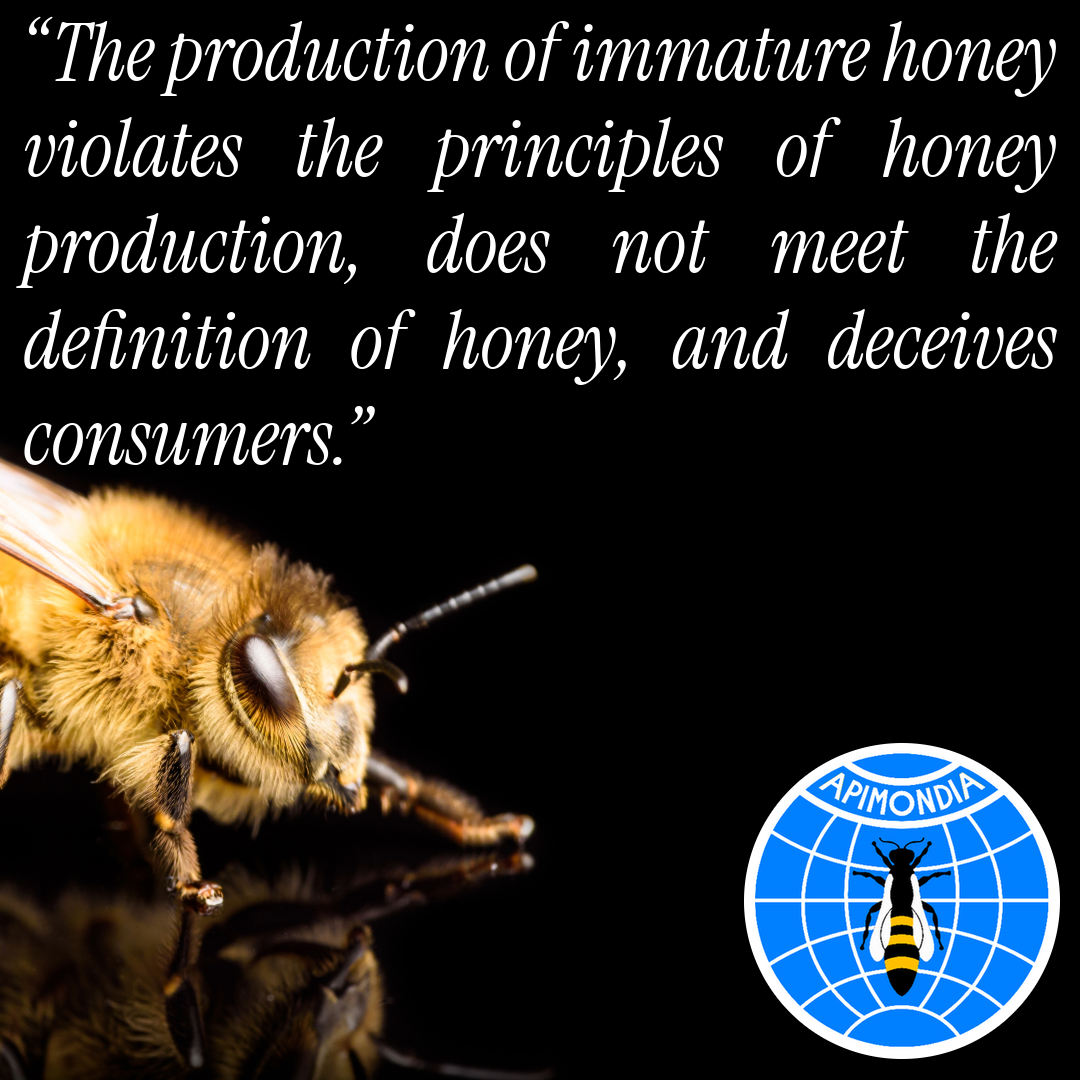In September 2025, Apimondia – the International Federation of Beekeepers’ Associations – released a landmark statement on the growing issue of immature honey production. The organization warned that this emerging practice not only violates the global definition of honey but also threatens bee welfare, honest beekeepers, and consumer trust.
So, what exactly is immature honey, and why is Apimondia taking such a strong stance?
What Is Immature Honey?
Immature honey – often called unripe honey – is nectar collected from hives before bees have completed the natural ripening process.
In normal circumstances, bees transform nectar into honey through a series of natural steps: adding enzymes, reducing moisture, and sealing (or “capping”) the honeycomb cells once the water content is low enough to prevent fermentation. This process ensures that honey remains stable, flavorful, and rich in nutrients.
When honey is harvested too early, its water content remains too high, and the bees haven’t had time to add all the natural compounds that make honey what it is. According to Apimondia, honey with more than 19% moisture will inevitably ferment, making it unsuitable for direct consumption.
How Immature Honey Is Produced – and Why It’s a Problem
In some regions, particularly in parts of Asia, beekeepers are harvesting honey early to speed up production and increase yields. The unripe honey is then mechanically dehydrated using vacuum dryers or other industrial methods to mimic the bees’ natural evaporation process.
Apimondia stresses that this human intervention breaches international honey standards set by Codex Alimentarius (1981), the EU Directive (2001), and the U.S. Pharmacopeia (2021). According to these standards, honey must be “exclusively made by bees” – meaning no artificial dehydration or chemical manipulation.
This practice is considered a form of food fraud, meeting all four European Commission criteria:
- Violation of the law
- Intention
- Economic gain
- Deception of consumers
In short, immature honey is not real honey and should not be labelled or marketed as such.
Impact on Bees and the Beekeeping Industry
Beyond consumer deception, immature honey production harms bees and the beekeeping ecosystem.
By removing honey before it’s ready:
- Bees lose a vital food source, impacting colony health and welfare.
- The natural balance of labor within the hive is disrupted, forcing younger bees into foraging roles prematurely.
- Brood combs (those containing developing bees) are often mixed and centrifuged, creating biosecurity and contamination risks.
Apimondia emphasizes that such practices undermine sustainable beekeeping, reduce biodiversity, and ultimately threaten global food security.
How to Detect Immature Honey
Detecting immature honey is complex. Traditional lab tests often fail to identify it, especially when products are filtered, blended, or treated with resins to disguise their true nature.
Apimondia recommends a multi-layered fraud prevention strategy, including:
- Traceability systems – ensuring honey can be tracked from beekeeper to jar.
- Unannounced audits – checking for the presence of honey dryers or artificial feeding practices.
- Economic monitoring – watching for suspiciously low prices or inflated export volumes that don’t match local production capacities.
Together, these tools help protect consumers and promote transparency in the global honey trade.
Apimondia’s Final Word
Apimondia’s 2025 statement concludes unequivocally:
“The production of immature honey violates the principles of honey production, does not meet the definition of honey, and deceives consumers.”
The organization calls on beekeepers, retailers, and regulators to uphold authentic practices – allowing bees to complete their natural work and preserving the integrity of one of nature’s purest foods.
Key Takeaway
Immature honey might look like honey, but it isn’t. It’s a manipulated product that compromises bee welfare, quality standards, and consumer trust. By supporting transparent and ethical beekeeping, consumers and industry players can help ensure that the honey on our tables is truly bee-made – just as nature intended.
https://www.tandfonline.com/doi/epdf/10.1080/0005772X.2025.2557068?needAccess=true
García, N. (2025) ‘Apimondia Statement on Immature Honey Production’, Bee World, pp. 1–5. doi: 10.1080/0005772X.2025.2557068.
*dehumidifiers can be used in legitimate honey production
